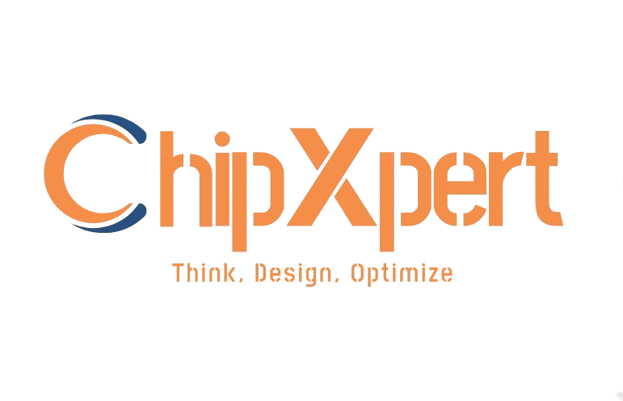Integrating AI in VLSI Design Flow at ChipXpert – Advanced VLSI Training Institute
Introduction
The integration of Artificial Intelligence (AI) into VLSI (Very Large Scale Integration) design flow has revolutionized semiconductor design and manufacturing. AI-driven automation, machine learning (ML) algorithms, and data-driven optimization techniques are transforming the traditional VLSI workflow, improving efficiency, accuracy, and productivity. ChipXpert VLSI Training Institute, a leading training center in VLSI, can leverage AI to enhance learning and equip students with industry-relevant skills. This article explores how AI is impacting the VLSI flow and proposes ways to introduce it into ChipXpert VLSI Training Institute.
AI in the VLSI Design Flow
The VLSI design flow consists of multiple stages, from specification and design to fabrication and testing. AI can be integrated at various stages to optimize the process:
- Specification and System-Level Design
- AI-powered tools assist in architectural exploration, design space optimization, and performance estimation.
- AI can analyze previous chip designs and suggest optimal architectures for power, performance, and area (PPA) trade-offs.
- RTL Design and Verification
- AI can automate RTL (Register Transfer Level) code generation and debugging.
- ML-based verification reduces simulation time by identifying critical test cases.
- AI-driven formal verification tools ensure design correctness with reduced human intervention.
- Synthesis and Optimization
- AI algorithms optimize synthesis results for timing, area, and power.
- Reinforcement learning techniques help in iterative design optimization.
- AI can predict synthesis failures, reducing debugging time.
- Placement and Routing (P&R)
- AI-driven placement and routing tools achieve optimal layouts while minimizing power and congestion.
- Machine learning assists in predicting and resolving routing congestion early in the flow.
- Google’s Deep Reinforcement Learning has been successfully used for chip floorplanning.
- Timing and Power Analysis
- AI models can predict timing violations and suggest fixes before physical verification.
- Power estimation tools use ML algorithms to provide more accurate results compared to traditional statistical methods.
- Design for Maneuverability (DFM) and Yield Optimization
- AI helps identify patterns in manufacturing defects and provides real-time corrective actions.
- AI-driven yield optimization increases fabrication efficiency by predicting failure patterns.
- Post-Silicon Validation and Testing
- AI-powered failure prediction models enhance test coverage and debugging.
- AI-based anomaly detection identifies manufacturing defects faster.
Benefits of AI in VLSI
- Automation of Repetitive Tasks: AI reduces manual intervention in verification, layout design, and debugging.
- Improved Accuracy: ML-based models predict design failures, reducing costly iterations.
- Faster Time-to-Market: AI speeds up design iterations, reducing chip development cycles.
- Optimized Power, Performance, and Area (PPA): AI enhances design efficiency by balancing PPA constraints.
- Reduced Cost: AI-driven automation reduces engineering efforts, minimizing overall development costs.
Introducing AI in ChipXpert VLSI Training Institute
To prepare students for AI-driven advancements in VLSI, ChipXpert VLSI Training Institute can introduce AI in its curriculum through the following initiatives:
- AI-Powered VLSI Courses
- Introduce specialized courses such as:
- “AI for VLSI Design and Verification”
- “Machine Learning in EDA (Electronic Design Automation)”
- “AI-driven Physical Design and Timing Closure”
- Include real-world AI applications in VLSI.
- Hands-on AI in VLSI Projects
- Provide students with projects on:
- AI-based RTL design automation.
- Machine learning for timing/power estimation.
- AI-driven DFM and defect prediction.
- Partner with EDA tool vendors to offer AI-enabled tools.
- Industry Collaboration and Internships
- Collaborate with AI-driven semiconductor companies like Synopsys, Cadence, Siemens, and Mentor Graphics.
- Facilitate internships where students work on AI-integrated AI in VLSI projects.
- AI-Powered Research and Development Lab
- Set up an AI-VLSI research lab for students to explore ML-based design automation.
- Provide access to AI-driven EDA tools.
- Workshops and Expert Sessions
- Invite AI experts from the semiconductor industry to conduct workshops.
- Host hackathons and competitions on AI-VLSI solutions.
- AI-Based Teaching Assistants
- Implement AI-powered chatbots for students to get instant answers on VLSI concepts.
- Use AI to track student progress and provide personalized learning paths.
Summary
AI is revolutionizing the VLSI design flow, making it faster, more efficient, and cost-effective. Integrating AI into ChipXpert VLSI Training Institute will enhance the learning experience and equip students with cutting-edge skills. By offering AI-focused courses, hands-on projects, industry collaborations, and AI-driven research labs, ChipXpert can become a pioneering VLSI Training institute that prepares students for the future of semiconductor design.


